Having dominated the Mediterranean and Asian trade routes for centuries, you might expect Venice to receive the recognition it deserves. However, many visitors to La Serenissima only spend a few hours in the city, flooding the Rialto Bridge and St. Mark’s Square. They might grab an overpriced soda and pizza before departing again. While they may have set foot in Venice, Italy, they have not truly experienced this remarkable floating city that glistens along the Adriatic Sea.
Venice is deserving of more than just a brief encounter. Even if you can’t stay for a full week to explore the city and its surrounding islands, dedicating two days to Venice will offer you experiences and sights that far too few travelers get to enjoy when visiting one of the world’s most enchanting destinations.
How to Plan Two Days in Venice
To truly enjoy your two days in Venice, it’s essential to stay within the city itself. Doing so allows you to experience the city at its best—when it awakens in the early morning and when a peaceful stillness settles in at dusk, as day-tripping tourists depart by water bus, private water taxi, or train.
For a memorable and centrally located stay, we recommend the Al Ponte Antico hotel.
With stunning views of the iconic Rialto Bridge, this family-owned boutique luxury hotel, built in the 1500s and fully renovated, is charming, cozy, and definitely worth the splurge. The staff is friendly and attentive, and the rooms are spacious and air-conditioned—a must during Venice’s hot and humid summers. This hotel truly is a hidden gem in the heart of it all.
A generous and sumptuous breakfast buffet is included with your stay, featuring pastries made on-site and coffee often served by the hotel’s owners. Enjoy your breakfast at leisure while gazing out at the Grand Canal and the Rialto Bridge—it feels like stepping into a fairy tale.
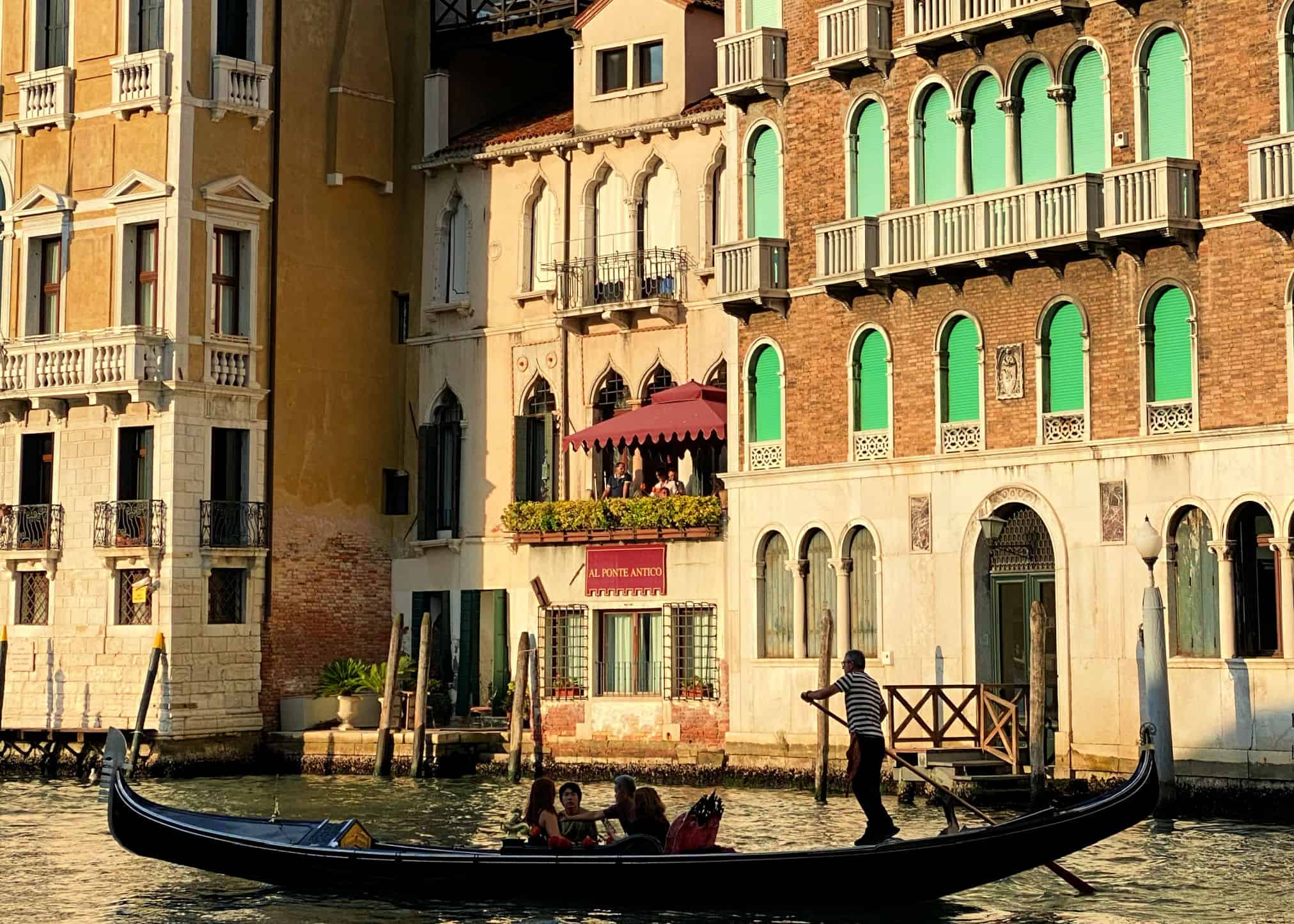
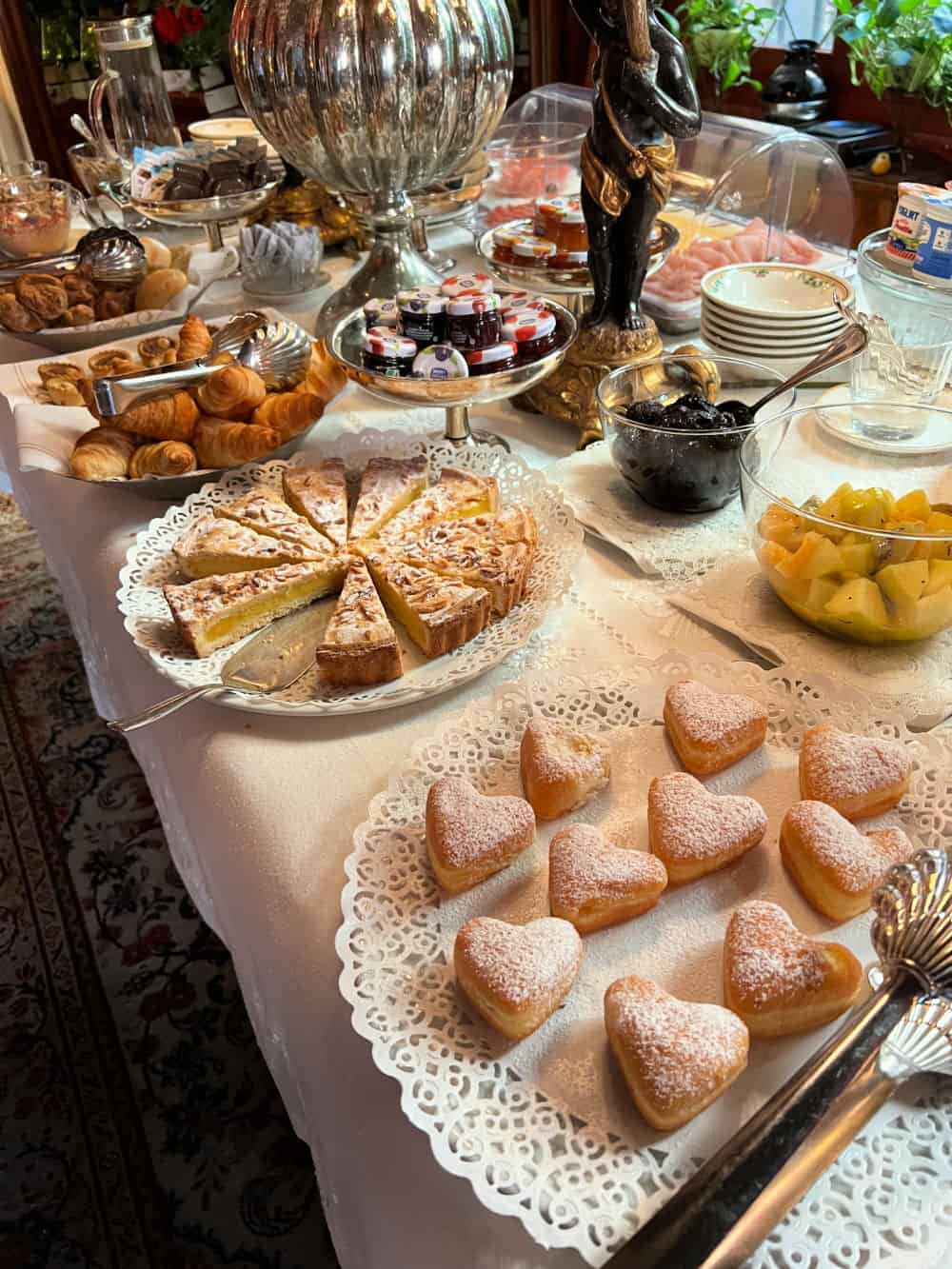
Use the map below to search for hotel and short-term rental options.
As of 2024, Venice has begun charging a 5 Euro entry fee for day-trippers. Remember, our two-day Venice itinerary offers suggestions that can be completed in any order. If you’re a first-time visitor, you may want to focus on highlights such as St. Mark’s Square, Doge’s Palace, and gondola rides on your first day.
Enjoy a Guided Tour of Venice
Navigating the narrow streets and over 300 bridges of Venice is fairly simple. However, exploring the city with a local guide who can reveal hidden details and lesser-known spots is one of the best experiences you can have in Venice—definitely worth every penny.
We connected with Nadia Danesin from Friend in Venice, who led us on a private walking tour that uncovered the city’s historical and lesser-known treasures. While free walking tours are available, I personally prefer private tours where the guide can tailor the experience to your interests.
Nadia enabled us to embrace Venetian life for a day; we learned about the city’s construction, the trading influence of Marco Polo, and the resilience of Venice through plagues, pestilence, and wars over the centuries. It was a captivating behind-the-scenes look at what shaped Venice into the prosperous powerhouse it once was—the remnants that attract tourists today.
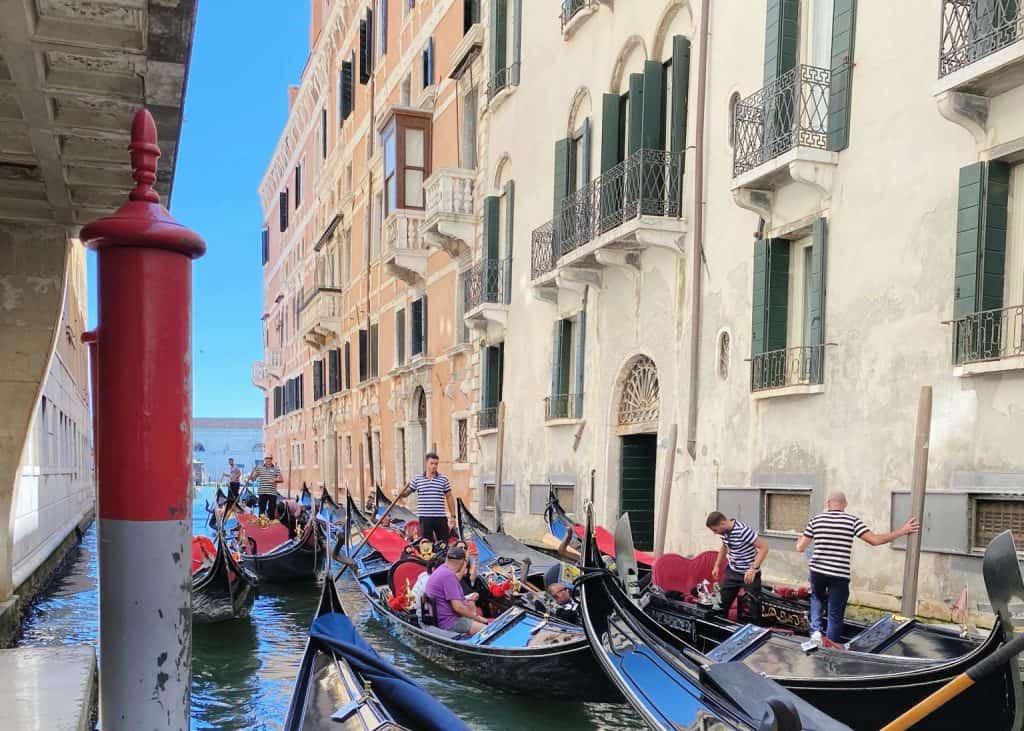
Tour Piazza San Marco
A guided tour of St. Mark’s Basilica in Piazza San Marco Square is usually at the top of the must-do list when in Venice.
As the church dedicated to the city’s patron saint, St. Mark’s Basilica dominates the square. This is the third church to occupy this site, dating back to the 11th century. Many of the artworks and supposedly the relics of Saint Mark were looted from ancient sites in the Holy Land. The church exhibits a blend of Byzantine, Medieval, and Renaissance art, architecture, and mosaics.
The famous gilded horses overlooking the square were early treasures brought from Constantinople following the Fourth Crusade. The originals are housed inside the church, but the replicas outside are equally captivating. Be sure to step out onto the terrace for stunning views of the square below.
Across from the Basilica stands the Campanile di San Marco. This 323 ft bell tower is a widely recognized landmark viewable from nearly anywhere in Venice. Originally serving a defensive purpose, the current structure is a reconstruction from the early 20th century and is mainly used for bell-ringing. Tourists can ascend for panoramic views of the city and lagoon.
Looking for more Italian adventures? Check out our articles on Rome, Florence, and the Amalfi Coast!
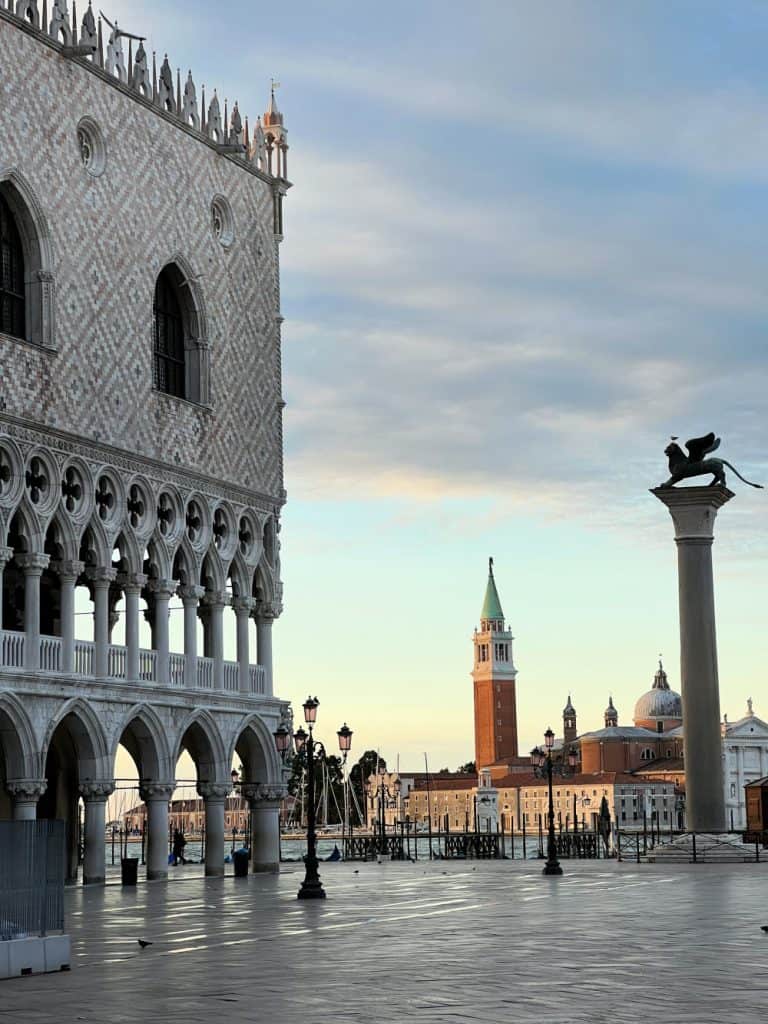
Visit the Doge’s Palace
If you’ve never visited Venice before, a tour of the interior of the Doge’s Palace, or Palazzo Ducale, is a must. The Doge was the leader of the Republic of Venice during its peak. The citizens traditionally elected older men (70+) for this role to ensure they didn’t remain in power for too long.
The Palace is a gilded marvel showcasing numerous works of art and opulent halls. The tour includes a walk across the Bridge of Sighs, named for the sighs of condemned men who would gaze upon Venice for the last time en route to the prison adjacent to the Palace.
Enjoy a Gondola Tour of the Grand Canal
A romantic gondola ride is a quintessential experience if you’ve never tried it before—and no, a Las Vegas gondola ride doesn’t count. I recommend scheduling your gondola tour early in the day or during sunset to avoid crowds and heat.
A sunset ride captures the breathtaking beauty of the city as the golden hour approaches. Prices for gondola rides are fixed across the city and currently sit at around 80 Euros as of 2024. You can easily hail a gondola in many places throughout the city center, including its smaller canals.
If you seek a less expensive and quicker gondola experience, consider taking a traghetto. These larger gondolas are used to ferry people across the Grand Canal in locations like the Fish Market.
At just 2 Euros, traghetti are a budget-friendly option, accommodating about 10 passengers. If romance isn’t your goal, a traghetto water taxi provides a perfect solution.
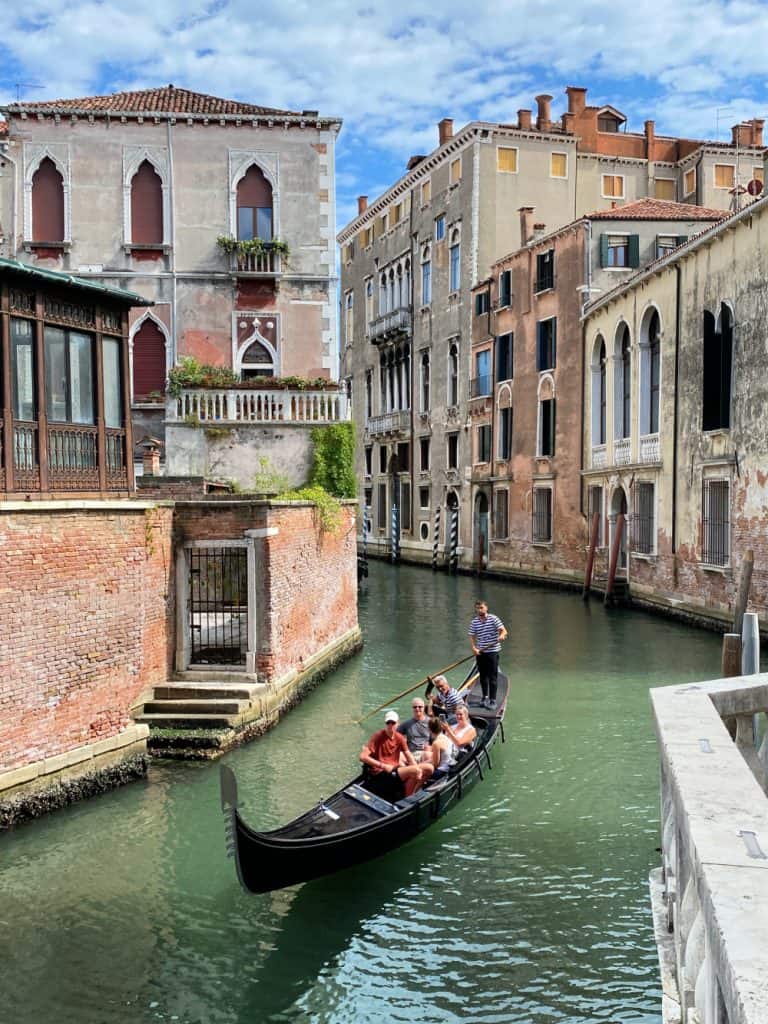
Tour Venice by ACTV Vaporetto
If you want to see all of Venice and some nearby islands without spending too much time, the easiest way is to utilize the ACTV Network of vaporetti (boats), which operate similarly to public buses in the city.
Using the vaporetto service is one of the best ways to explore Venice and its intricate canal system and lagoon. You can purchase individual tickets or opt for a 24 or 48-hour (or more) travel card for unlimited rides.
Visit the Island of Giudecca
This island may not be as famous as others, but it is accessible via vaporetto and is known for its Palladio-designed church, Il Redentore. This church features prominently in Venice’s grand cultural festival held on the third Sunday in July, known as the Festa del Redentore.
During Redentore weekend, a lengthy dock and a temporary barge bridge allow Venetians to cross the lagoon and celebrate the end of the 16th century plague that claimed about 50,000 lives. Fireworks cap off the festivities, making it a spectacular time to be in Venice.
Head to the Rooftop of the Fondaco dei Tedeschi
Once the headquarters for the German trading community in Venice and one of the largest buildings on the Grand Canal, the current Fondaco dei Tedeschi (German Warehouse) has been transformed into a high-end duty-free shopping mall with four levels, conveniently located near the Rialto Bridge.
While it features a selection of chic souvenir shops, the highlight here is the rooftop, which provides some of the best views of the city.
Tickets to the rooftop are free but must be booked in advance. Entries are time-specific, and your visit lasts for 15 minutes—plenty of time to soak in the breathtaking views and snap a few selfies.
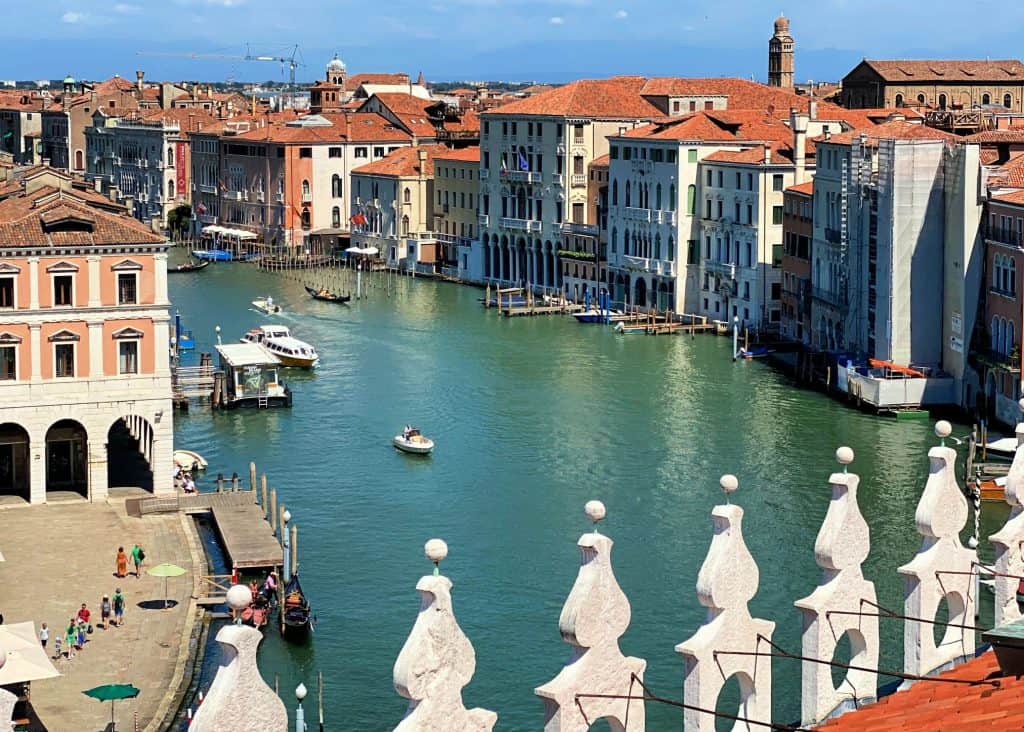
Eat Cicchetti at a Venetian Bacaro
A bacaro is the Venetian term for bar. Cicchetti are essentially small snacks, akin to tapas, featuring fried delicacies such as arancini, polpette (meatballs), and crostini topped with grilled vegetables, bacalà (creamed cod), sardines ‘in saor,’ and various meats. These are best enjoyed with wine, beer, or a cocktail, with Aperol Spritz being a popular choice in the summer. Some of our favorite bacari include: All-Arco (near the Fish Market), Osteria Al Sacro e Profano (close to Rialto Bridge), Bacaro Pane e Vino, and Bacaro Risorto Castello in Cannaregio.
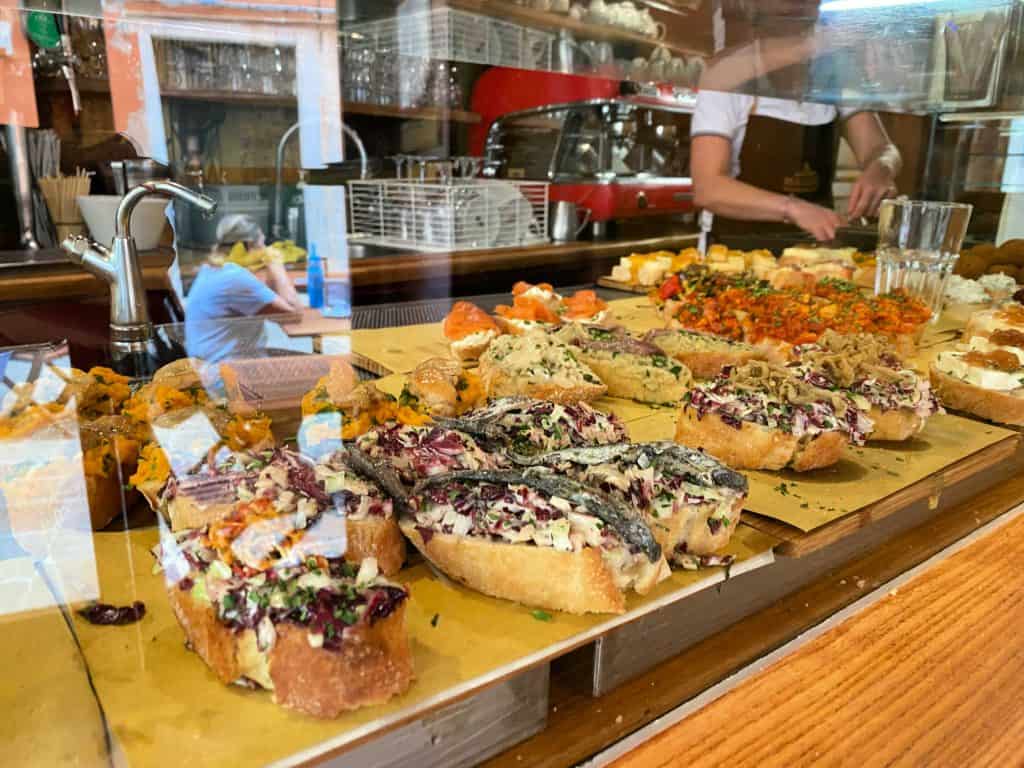
Take a Trip to Burano and Murano
The Venetian lagoon is home to numerous small islands, but Burano and Murano stand out for their vibrant homes and exquisite glassware. Ideally, I recommend spending a full day on each of these islands, but if your stay is limited to two days, consider dividing your time between the two.
Burano, just over an hour from Venice (Ponte del Guglie) by boat, is famed for its lacework, Venetian masks, and brightly colored houses. It’s a picturesque place to sip espresso in its main square, Piazza Galuppi, and stroll along the canal that runs through the island.
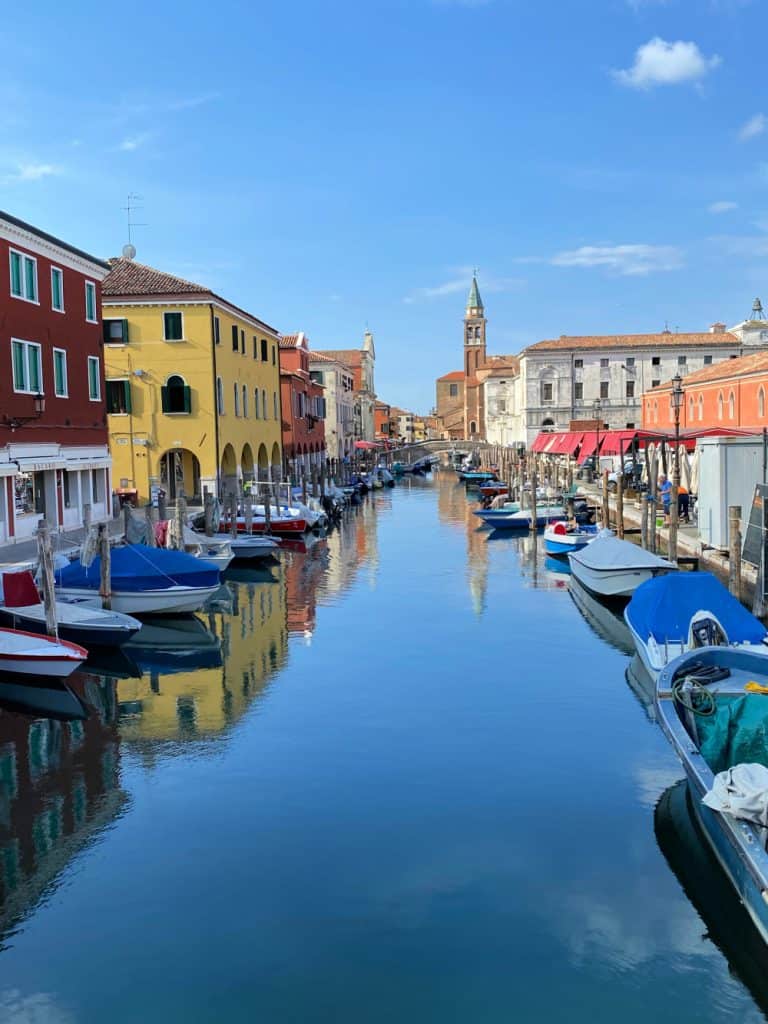
Murano is closer to central Venice, about 30 minutes by boat. This group of islands has been famed for its glass-making since the 13th century. Nearly every shop showcases stunning glass chandeliers, jewelry, lamps, and vases. The Murano Glass Museum offers visitors a fascinating insight into glassmaking’s rich history.
Note: Always inquire with vendors to ensure that the glass items you wish to purchase were made in Murano, as some may be imported from China.
Wander the Aisles of Libreria Aqua Alta
One of the most unique bookstores in the world, Libreria Aqua Alta is renowned for its charming aesthetic and ability to weather Venice’s recurring floods by storing much of its inventory in bathtubs and boats. This bookstore is a hidden gem and a must-visit for literature lovers.
As you browse, keep an eye out for the several cats that have made the store their home; they often hide among the shelves!
Visit the Jewish Ghetto
Venice is home to Europe’s first Jewish Ghetto, established in the 16th century. The term “ghetto” itself comes from the Venetian giotto, referring to a foundry located near this area.
The Ghetto is situated in the Cannaregio district, about a 20-30 minute walk from St. Mark’s and the Rialto Bridge. On your way, you’ll encounter the “Spritz Kilometer,” a playful nod to the abundance of bacaro bars, clubs, and restaurants lining the route—a perfect spot to stop for an Aperol spritz and some cicchetti before or after visiting the Ghetto.
Jewish life in Venice was historically confined to the Ghetto until Napoleon’s liberation of the city in the 19th century. Today, the area has undergone gentrification, but synagogues, restaurants, and shops remain busy with a local population of around 450 Venetian Jews.
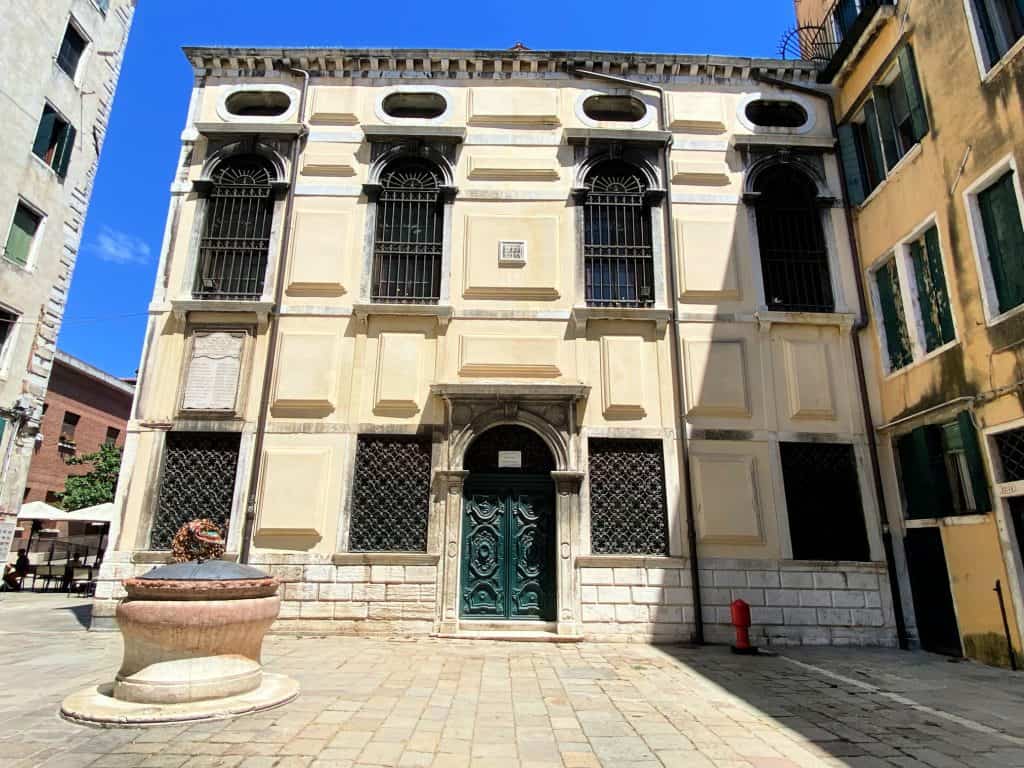
Have you visited Venice? What are some of your favorite places? Share your thoughts in the comments below.
Photos: Claudia Laroye
Read more 48 Hours City Guides:
- How to Enjoy a Scandi Chic Weekend in Gothenburg
- Tips for an Unforgettable Lost Weekend in New Orleans
- How to Spend the Best Weekend in Montreal
- How to Enjoy 48 Hours in Vancouver




